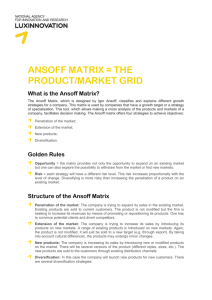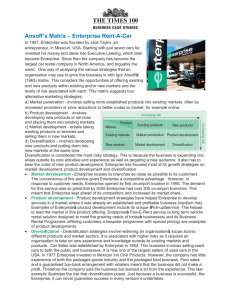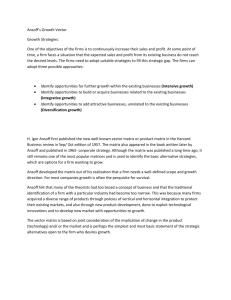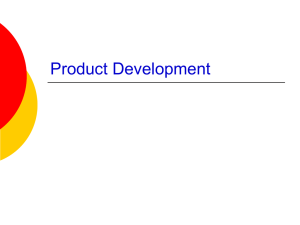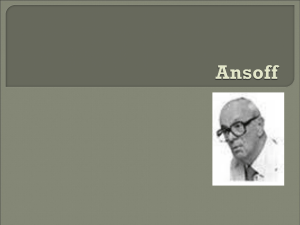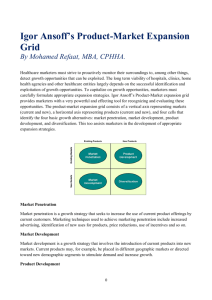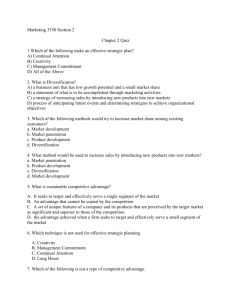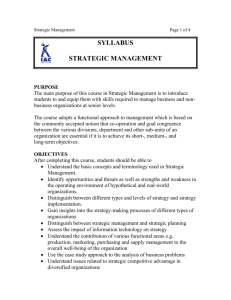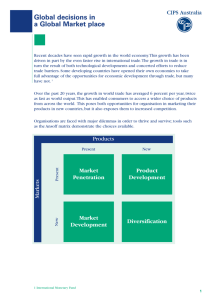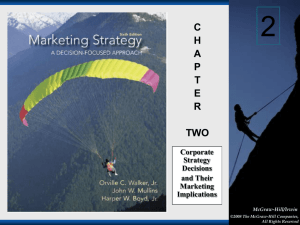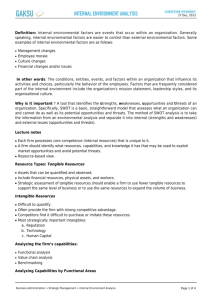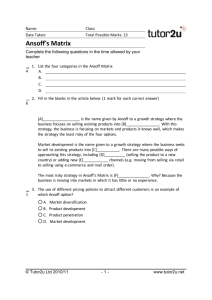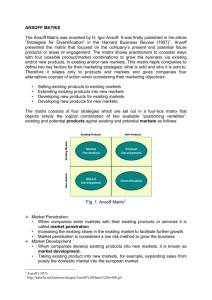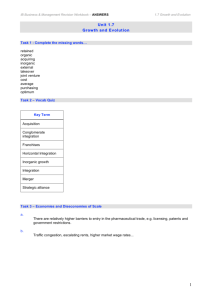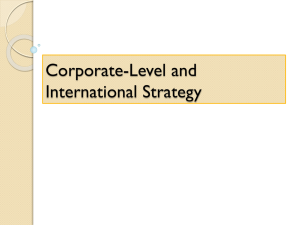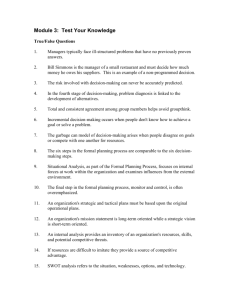1.7.F Ansoff matrix - business-and-management-aiss
advertisement
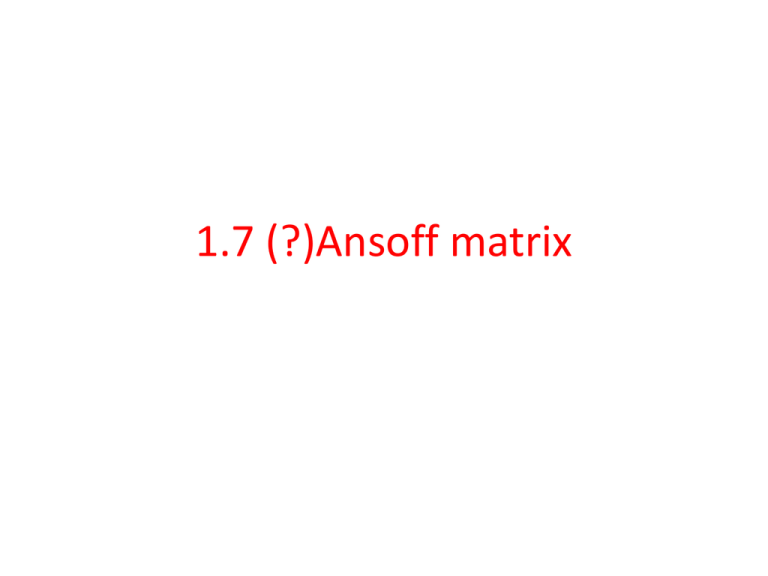
1.7 (?)Ansoff matrix Describe Ansoff matrix • Igor Ansoff (1957) developed a strategic decision-making tool (Ansoff matrix) to analyze the different options for expansion available to a business. • His approach is represented in the form of a matrix with 4 possible growth strategies in terms of products and markets. • These options can be illustrated as follows: Illustration What is Market Penetration? • Market penetration is a low-risk growth strategy that is simply selling more of existing products to existing customers. • It can be achieved by reducing price, more advertising, better advertising, improving sales techniques, more and/or better distribution methods, new packaging, etc. • The aim is to increase market share of existing market. Features of market penetration • It is the safest of the four product-market strategies and requires minimum marketing or product research expenditure compared to other growth strategies • One limitation is that competitors will respond quickly leading to price wars. Also existing markets can become saturated quickly and an alternative strategy has to be found What is Product Development? • Product development is a medium-risk growth strategy that involves introducing new products in existing market. • In industries where there is a short product life cycle (I-phones, computers, cars), product development is a central strategy to retain existing customers. E.g. Apple, Toyota, McDonald, etc Features • It is suitable way of retaining existing customers when existing products have reached the saturation stage of their life cycle and new products can be launched under the same brand name. • However, it requires some investments in product research and development and all new products may not be successful. What is market development? • Market development is a medium risk growth strategy that involves selling existing products in new markets. • To attract different market segments, prices can be changed or new promotion techniques can be used • New markets can be another geographical area, another demographic group (a new social class) or another audience (new channel users :ecustomers). Features • One key advantage of this growth is that the business is familiar the product and can move from a saturated segment into a new one. • However, success is not guaranteed in another market segment and some marketing expenditure is necessary. Diversification? • Diversification is a high risk strategy that involves introducing new products in new markets. Its main objective is spreading of risks. • A common way to diversify is to become a holding (parent) company with several subsidiaries and this is why it is sometimes known as conglomerate diversification. Two types of diversification • Related diversification occurs when a business caters different but within the same range of products for a new market. E.g. Toyota offering Lexus, Pepsi offering bottled water. • Unrelated diversification occurs when a business caters for completely new products in new markets. E.g. Samsung operates in electronic, shipbuilding, insurance, etc. Features • Diversification allows spreading of risks to a great extent and to become a powerful market player • However, the dangers of diversification are that too much time and resources can be devoted to non-core activities or there can be no managerial skills in the alternative industries.

